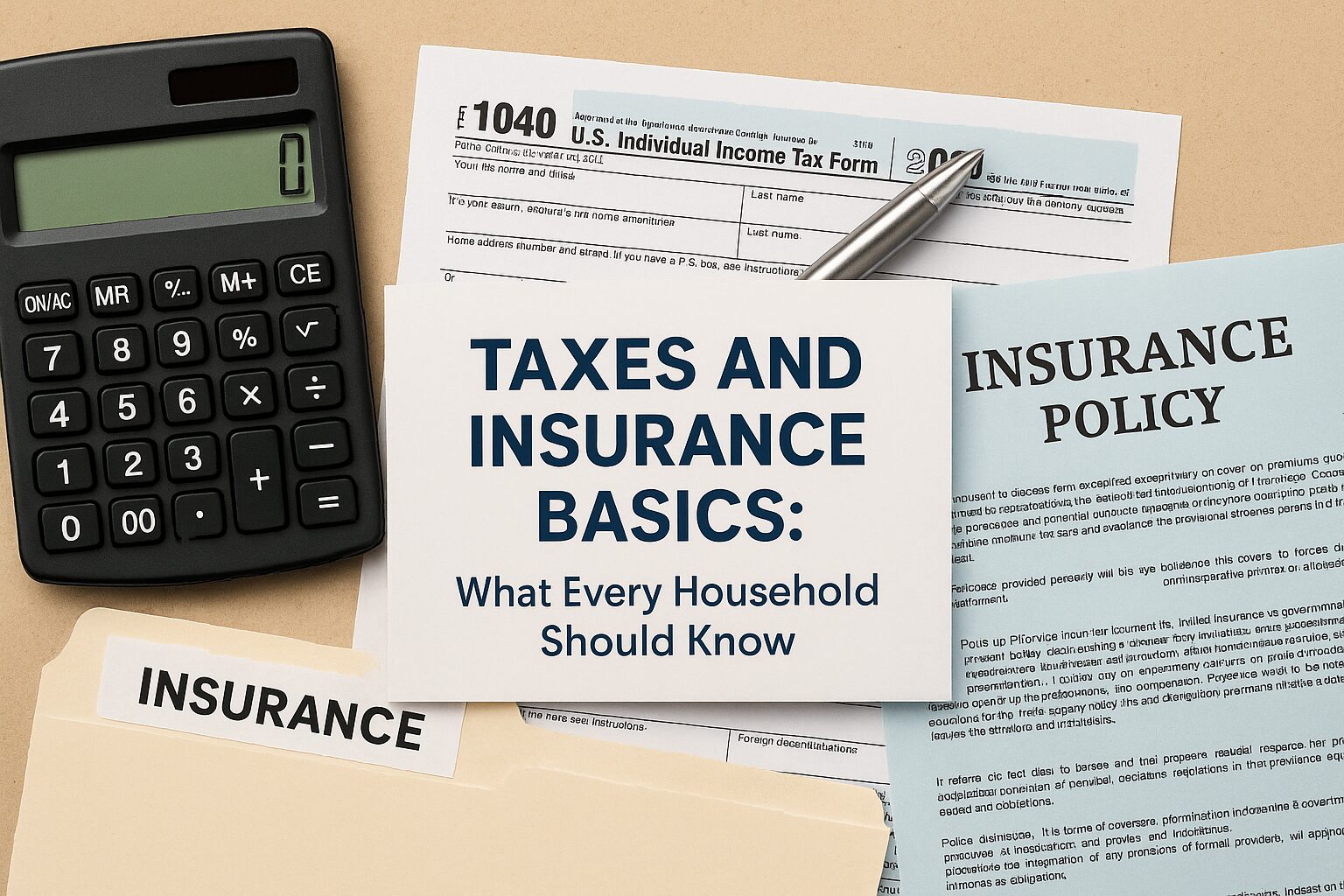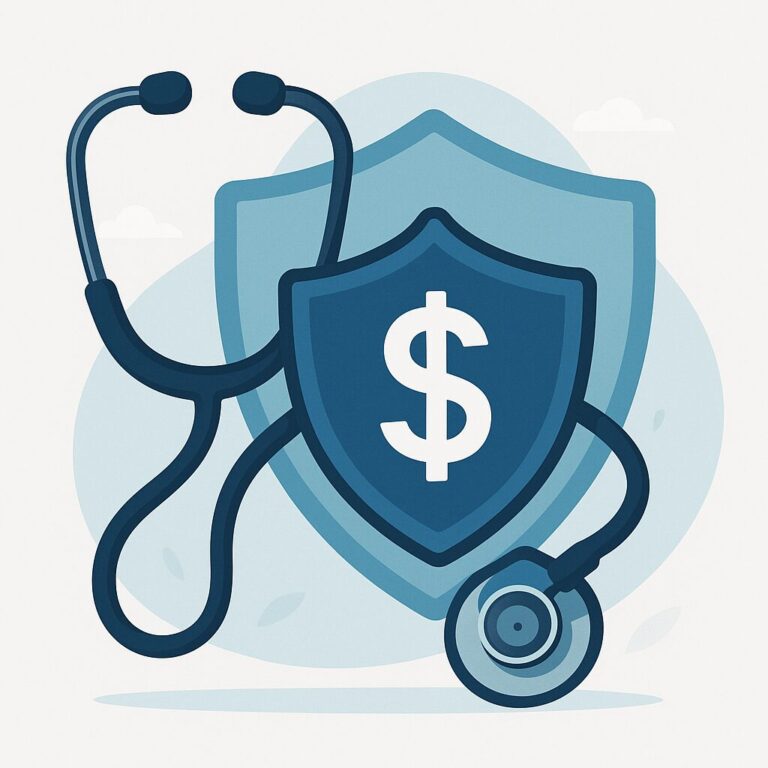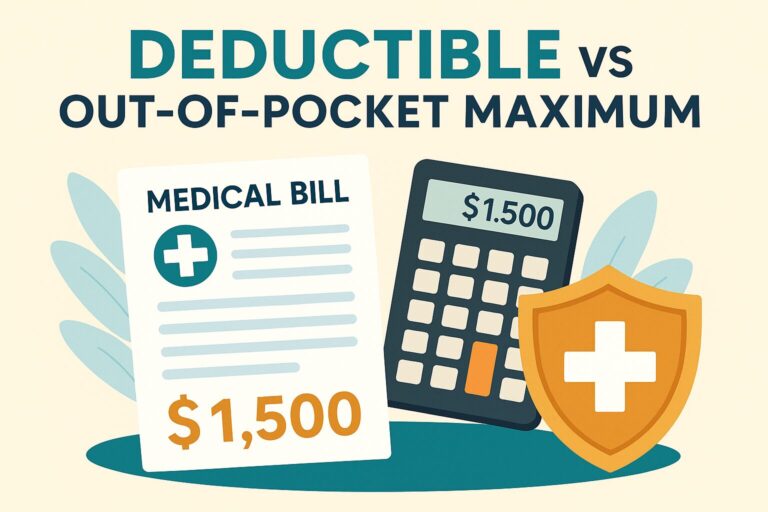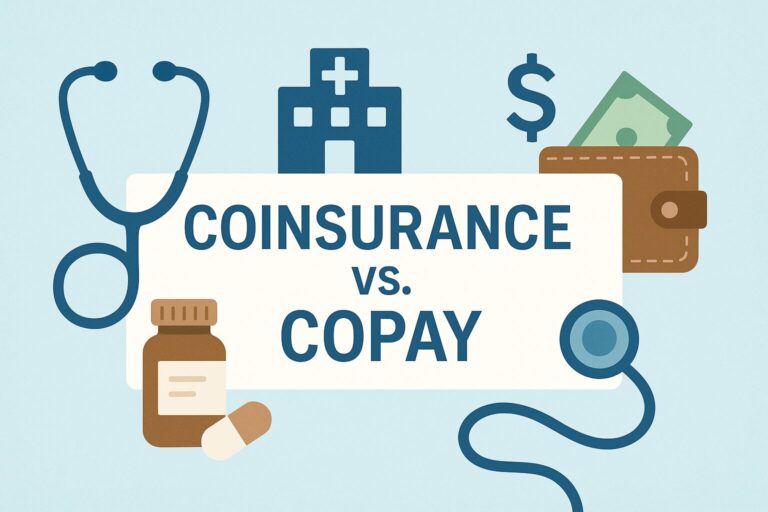Taxes and Insurance Basics: What Every Household Should Know
When most people think about personal finance, their minds go straight to budgeting, saving, or maybe investing in the stock market. Those are exciting topics—you can picture your savings account growing or your investment balance compounding over time. But two areas that often get shoved to the background—taxes and insurance—play just as critical a role in your financial health.
They may not feel glamorous, but they are the backbone of financial stability. Taxes determine how much of your hard-earned income you actually keep, while insurance protects that income and the wealth you’re building from being wiped out by life’s curveballs. Ignore them, and even the best financial plan can fall apart.
This guide breaks down the basics of taxes and insurance, explains why they matter, and shows you how to start building them into your household’s financial strategy.
Why Taxes Matter to Your Finances
If you add up what you’ll pay in federal, state, and local taxes over a lifetime, it’s one of your biggest expenses—often larger than housing, healthcare, or even food. Understanding how taxes work isn’t about gaming the system. It’s about making sure you don’t leave money on the table and that you pay what you owe—no more, no less.
And let’s be clear: don’t play games with the IRS or your state taxing authority. Skimping on taxes or trying to hide income almost always costs more in penalties, audits, or even jail time than the taxes themselves. Pay what you owe—but be smart enough to not overpay.
Here are the key areas of taxation most households need to understand:
Income Taxes
Your federal income tax is based on a progressive tax system. That means you don’t pay a flat percentage on every dollar. Instead, you move up through brackets: the first portion of your income is taxed at the lowest rate, then the next slice at a higher rate, and so on.
That’s why it’s important to know:
- Gross income (everything you make before deductions)
- Adjusted Gross Income (AGI) (gross minus certain adjustments, like retirement contributions or student loan interest)
- Taxable income (what’s left after standard or itemized deductions)
Understanding these layers matters, because where your taxable income falls determines your bracket—and how much you’ll pay overall.
Payroll Taxes (Social Security & Medicare)
If you’re a W-2 employee, you’ve probably noticed “FICA” on your paycheck stub. That’s payroll tax, and it funds Social Security and Medicare.
- In 2025, you pay 6.2% of wages to Social Security (capped at $176,100 of earnings) and 1.45% to Medicare (with no cap).
- Your employer matches those amounts, so a total of 15.3% goes into the system (7.65% from you, 7.65% from them).
- If you’re self-employed, you pay both halves, but you also get to deduct the “employer” portion on your taxes.
It may sting to see that money leave your paycheck, but remember—it’s funding your future retirement and health coverage.
Capital Gains Taxes
If you sell an investment for more than you bought it, the profit is called a capital gain, and yes, it’s taxable.
The IRS uses a separate bracket system for long-term capital gains (assets held more than a year). For 2025 (single filers):
- 0%: Up to $48,350 in taxable income
- 15%: $48,351 – $533,400
- 20%: Above $533,400
Your ordinary income and deductions determine where you land in the capital gains brackets, but the rates themselves are distinct from income tax brackets.
Short-term gains (from selling within a year) are different—they’re taxed as ordinary income.
Tax Credits vs. Deductions
One of the most powerful ways to reduce your tax bill is by understanding the difference between deductions and credits:
- Deductions reduce taxable income. Think of them as discounts: if you’re in the 22% bracket and deduct $1,000, you save $220.
- Credits reduce your tax liability dollar for dollar. If you owe $1,000 in tax and qualify for a $1,000 credit, your tax drops to zero.
As Mel Abraham puts it in Building Your Money Machine: deductions are like discounts, credits are like gift cards. Track them throughout the year, not just at tax time. So keep the discounts and gift cards mindset in mind when keeping track of those deductions and credits.
📌 Pro Tip: If you’re anything beyond a simple W-2 filer, consider professional tax software or a CPA. The upfront cost often pays for itself in savings.
Why Insurance is Non-Negotiable
Taxes are about protecting your money from government overreach. Insurance is about protecting your money from life’s unpredictability.
Without the right insurance, one accident, illness, or natural disaster could erase years of financial progress. With the right coverage, the worst day of your life won’t also become the worst day for your bank account.
Here are the core types of insurance most households need:
Health Insurance
Medical costs are one of the leading causes of bankruptcy in the U.S. Even a brief ER visit can cost thousands. A family plan may feel expensive at $1,000/month, but it’s pennies compared to a $10,000 surgery or a $50,000 hospitalization.
Choose a plan with a deductible and out-of-pocket maximum you could reasonably handle if something happened tomorrow. Don’t go bare-bones just to save money now.
You will also want to consider if you can afford the co-insurance that usually comes after you pay your deductible. If you can’t afford usuallt 20% of a medical bill, you may want to find a health insurance with a low deductible and copays. Check out my article on Co-isurance vs. Copays here.
Finally, just remember, if you want to maintain your lifestyle, you must have health insurance to protect those lifestyle funds.
You can also click here to get all the considerations for your health insurance policy needs.
Auto Insurance
Nearly every state requires it, but minimum coverage is rarely enough. A minor fender-bender can cost $3,500. A more serious accident can cost thousands more. Without coverage, you’re personally responsible.
Full coverage means you only pay your deductible (often $500–$1,000) while the insurance company handles the rest. Skimping here is gambling with your financial stability.
Click here to read my post on auto insurance basics. You will learn everything you need to consider for your auto insurance needs in the post.
Homeowners or Renters Insurance
For homeowners, this protects your biggest asset. For renters, it protects your belongings and shields you from liability if you cause damage.
If a storm destroys your roof or a pipe floods your apartment, the $1,000 deductible is a small price to pay compared to a $25,000 repair bill.
Life Insurance
If anyone relies on your income—spouse, kids, even aging parents—you need life insurance. Term life insurance is typically the most cost-effective. Skip expensive whole life policies; once your investments are strong enough, you can eventually drop coverage altogether.
One type of life insurance I highly recommend you stay away from is Indexed Universal Life (IUL). Read my post here to find out why to stay away from IULs (or any other kind of Universal Life policy, for that matter).
Disability Insurance
This one doesn’t get talked about enough. If you’re unable to work due to illness or injury, disability insurance replaces a portion of your income. If you don’t have this insurance, you could be looking at sinking everything you’ve worked hard for financially. And even worse, you could find yourself in major levels of debt, possibly needing the government’s help (bankruptcy) to get out.
Mel Abraham makes a smart distinction here:
- Short-term disability: Often unnecessary if you have a robust emergency fund.
- Long-term disability: Essential, because a few months you can cover with savings; a few years you cannot.
How Taxes and Insurance Work Together
Think of taxes and insurance as the defense in your financial game plan. Income, savings, and investing are the offense—they move you forward. Taxes and insurance are the guardrails that keep you from sliding backward.
There’s the thing. If you don’t pay what you owe in taxes, you will owe it to the government anyway, and that debt is more expensive than most credit card debt. So pay what you have to, but always use all of your available deductions and Credits (I can’t say it enough).
- Taxes: The less you pay (legally), the more you keep to invest, save, and enjoy.
- Insurance: The right policies ensure one medical bill, lawsuit, or accident doesn’t derail your entire financial life.
Together, they give you stability. They make sure that when you take steps forward financially, you actually get to keep the ground you’ve gained.
Getting Started in Your Household
Ready to put this into practice? Here are three steps to get started:
- Review last year’s tax return. Did you miss deductions or credits? Are you optimizing retirement contributions or health savings accounts?
- Audit your insurance coverage. Do you have enough, or are you overpaying? Compare policies once a year.
- Schedule a yearly “money checkup.” Treat it like a doctor’s visit for your finances—taxes, insurance, budget, and investments all get reviewed.
Final Word
Taxes and insurance may not be flashy, but they’re foundational. Master them, and you’ll free up more money for wealth-building and protect yourself from financial disaster.
What’s one area of taxes or insurance you wish you had learned earlier—and how has it impacted your finances? I look forward to hearing from you, and I always respond to comments.






